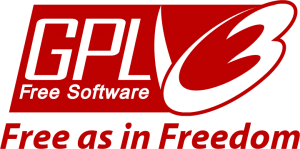It is important to understand that Creative Commons is not the only type of openly-licensed content.
Yes, Creative Commons is the open license that popularized open educational resources, but a resource can be OER without carrying a Creative Commons license.
OER can come in at least 3 other forms:
GNU License Suite

GNU is an organization sponsored by the Free Software Academy; GNU has produced a number of licenses relating to software. Some web material you may come across make use of the following:
GPL – GNU’s General Public License is used for many software packages, as well as other items. Under this license, materials can be copied and distributed verbatim, but cannot be changed in any way.
GFDL – The GNU Free Documentation License is a form of copyleft intended for use on a manual, textbook or other documents. Under this license, materials can be copied and redistributed with or without modifications, either commercially or non-commercially.
Explore more: GNU Operating System
Public Domain
Simply stated, public domain works are works that are copyright free. No one owns the copyright.
There are two types of specific works that fall under this category. The first are works that never had copyright to begin with such as all items created by the U.S. federal government. The second group refers to those works whose copyright has run out.
The law acknowledges that while copyright is important to the original creator, knowledge is built upon and should not be restricted forever. Generally speaking, items that have a U.S. copyright date before 1923 are no longer supported by the “all rights reserved” elements of copyright law. Generally speaking, copyright is extended to 75 years from the death of the author, so recent works will not be in the public domain for many years. There are, of course, some exceptions to the rules.
Watch this fascinating video about Public Domain works from Jennifer Jenkins, Duke University School of Law.
If you want more information about such exceptions, a great resource is found at the Cornell University Library Copyright Information Center (https://copyright.cornell.edu/publicdomain)
Government-Produced Resources
Broadly speaking, most content found on .gov websites is public domain. Examples of good government-produced OER are the National Institute of Health’s Toxicology Tutor and NASA’s Historical Studies in the Societal Impact of Spaceflight textbook.
Look closely at .gov content, however. Sometimes the materials hosted there have been contracted out or developed in partnership with a company or organization, and in these cases, a traditional, all rights reserved copyright may be present.
The content of this course is adapted from the following works:
- “Find OER” by Open Professionals Education Network, licensed under CC BY 4.0
- “OER 101” by David Rose, American University, licensed under CC BY 4.0
- “Evaluating OERs” by Duke Library at Furman University, licensed under CC BY 4.0 / A derivative from the original work
- “Adopt OER” by Open Education Consortium, licensed under CC BY 4.0
- How to attribute Creative Commons licensed Materials by National Copyright Unit, Copyright Advisory Groups (Schools and TAFEs) licensed under CC BY 4.0
- “Open Attribution Builder” by Open Washington, SBCTC licensed under CC BY 4.0
- “Types of OER” by Montgomery College, licensed under CC BY 4.0
![]() Unless otherwise noted, this work is licensed under a
Unless otherwise noted, this work is licensed under a
Creative Commons Attribution 4.0 International License.
